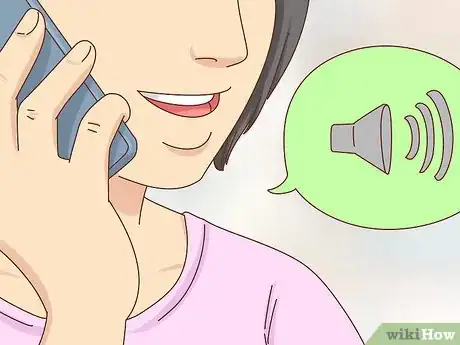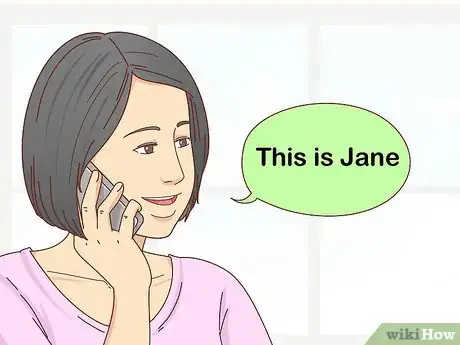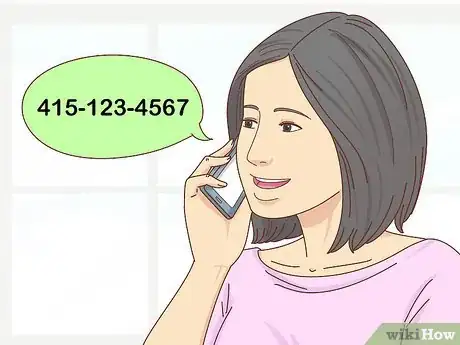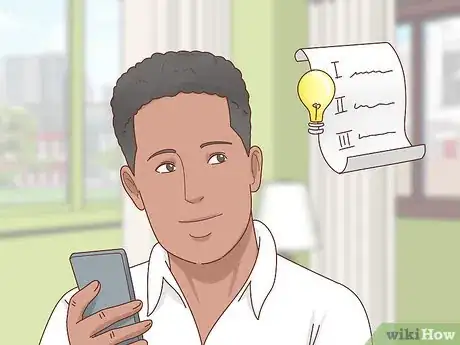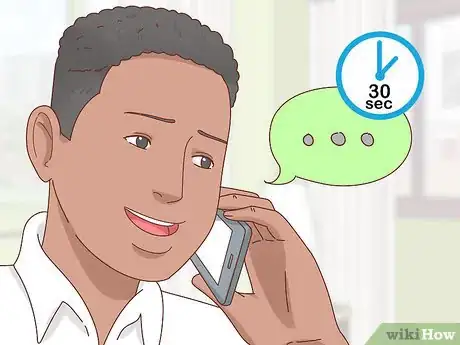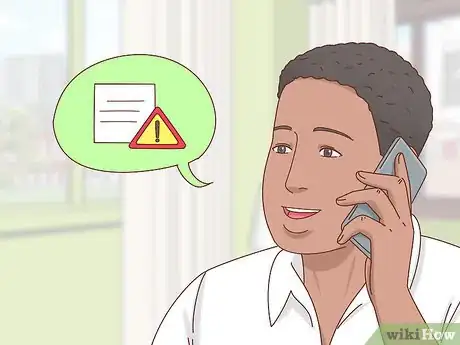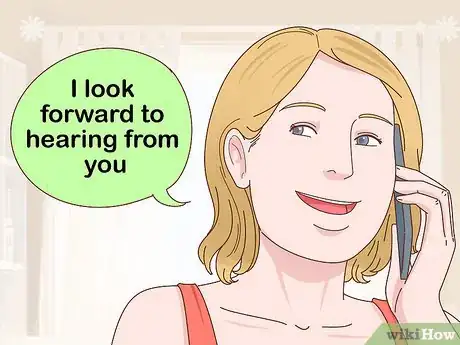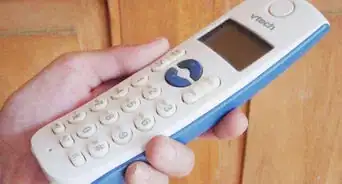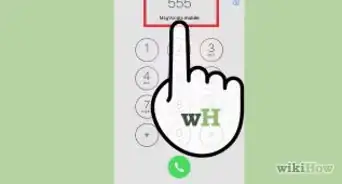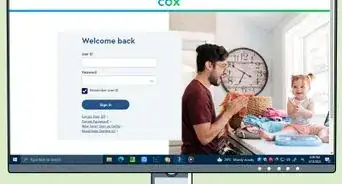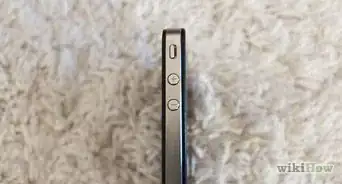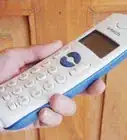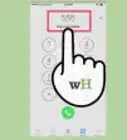This article was co-authored by Lynda Jean. Lynda Jean is an Image Consultant and the Owner of Lynda Jean Image Consulting. With over 15 years of experience, Lynda specializes in color and body/style analysis, wardrobe audits, personal shopping, social and professional etiquette, and personal and business branding. She works with clients to enhance their image, self-esteem, behavior, and communication to facilitate their social and career goals. Lynda holds Bachelor degrees in Sociology and Social Work, a Master’s degree in Clinical Social Work, and a Certified Image Consultant (CIC) certification. She studied Image Consulting at the International Image Institute and the International Academy of Fashion and Technology in Toronto, Canada. Lynda has taught Image Consulting courses at George Brown College in Toronto, Canada. She is the co-author of the book, “Business Success With Ease,” where she shares her knowledge about, ‘The Power of Professional Etiquette.’
This article has been viewed 279,905 times.
Many jobs require you to get in touch with clients or coworkers via phone, and if they do not pick up, it is important to be able to leave a professional, informative voicemail. This wikiHow article will teach you how to compose and deliver the perfect voice message.
Steps
Identifying Yourself
-
1Use the right tone of voice. As soon as you begin recording your message, speak in a clear, audible voice.[1] Don’t mutter or talk too fast. Try your best to sound interested and energetic to engage your listener’s attention. Even though the recipient can’t see you, your general tone will come across over the phone, so make sure you’re conveying the right one.
- Enunciate everything you say. Bad reception can distort your voice and cause you to cut out. Even an ordinary speaking voice can become muddled over the phone.
- The quality of your voice should appropriately reflect the manner of the call. For example, it's alright to sound excited when you're leaving a voicemail to congratulate your nephew on his high school graduation. If you're offering condolences to a grieving friend, however, you should keep your tone solemn and respectful.
-
2Mention your name. Give the recipient your name first thing.[2] This way, the person you’re calling will know who you are right off the bat. A simple "this is (your first name)" will do in most situations, or a more introductory "my name is (full name)" if the person you're calling hasn't met you before. Friends and relatives will recognize you without the need for further identification. If it’s a professional call, they’ll have a name to associate with the voice and message, which will help open up a more personal line of communication.[3]
- This step seems like a given, but it’s often forgotten by callers when they’re put on the spot.
- If you have a job title or a description of yourself that might prove useful to the recipient in a follow-up call, list it after your name, i.e. "My name is Dr. Holdsworth, senior radiologist at Sacred Heart Medical Center," or "this is Gloria Carpenter, I'm Chloe's mother from school."
Advertisement -
3Leave your phone number.[4] Recite your phone number immediately after your name. Most callers wait until the end of the voicemail to provide their contact info, but if the recipient doesn’t catch it the first time, they’ll be forced to listen to the entire message again. Remember to speak slowly and enunciate when leaving your phone number so that it’s comprehensible.[5]
- A simple way to offer your phone number at the beginning of the message is to say something like “this is (your name), my number is (your phone number),” or “my name is (name) calling from (number).”
- Despite the prevalence of Caller ID features, it’s always advisable to leave your phone number in case the person you’re calling doesn’t have your number saved, or you’re requesting that they return your call at a different extension.
-
4Make a connection. When listening to business-related voicemails or messages from unknown senders, people will begin to grow suspicious or disinterested if they don’t know who you are or why you’re calling. Put them at ease by mentioning a mutual friend or reference who’s provided you with their number. Again, this makes the call feel more personal. The voicemail will seem less invasive, and you’ll be more likely to receive a response.
- Try making a short introduction that will clue the listener in, such as "I got your number from Pat, who says you're interested in selling your boat."
- Even if you’re not making a business call, establishing a connection can help make your recipient more comfortable. “This is Bob, your neighbor from across the street” is more personable than “This is Robert Henderson.”
Stating Your Business
-
1Think about what you’re going to say beforehand. Have a clear idea of what you’re going to say before you start leaving a voicemail. This shouldn’t be much of an issue if you’re calling with a specific intention, but hearing the beep on the other end and knowing they’re being recorded can cause a lot of callers to draw a blank. Break the information down into bullet points and hit each one before hanging up.[6]
- For voicemails that are especially pressing or important, consider writing out a rough script ahead of time.
- If you catch yourself spacing out, just focus on getting out your name, callback number and reason for calling in a few words.
- Image that you're sending a voicemail to follow up with a romantic interest about last night's date. Mentally outlining your message before you record it can mean the difference between coming off as cool, calm and collected and a stammering, nervous wreck.
-
2Keep your message brief. Restrict your voicemail message to 20-30 seconds. There will rarely be an occasion when a voicemail needs to be longer. You don’t want to bore the recipient with an overly long, meandering introduction or story. Stay terse and to the point. A short message can actually generate curiosity and persuade a person to call back when they might not have otherwise.[7]
- On the flip side, if you leave a voicemail that’s too short, your recipient may think it’s unimportant and delete it without even listening to it. This is especially likely if you’re calling from an unlisted number.[8]
- The point of leaving a voicemail is to compel someone to call you back, not to unload all the information you were going to share with them during the call.
-
3Open with the most important info. Cut to the chase and be explicit about your reason for calling. If you’re just touching base, say so; if you have a sales offer, or are following up with a transaction or confirming an appointment, let the recipient know. Your listener will quickly lose interest and may delete the message if you don’t inform them of your purpose up front.[9]
- You only have a short time to get your point across. If you beat around the bush, your listener may give up on the message before they arrive at any crucial information.
- It's much better to deliver difficult news like "dad is in the hospital" point blank, and use the remainder of the message to console and explain, than it is to dance around the subject and cause your listener to worry.
-
4Be personal and organic. Resist the urge to slip into a stilted, generic-sounding “phone voice.” Just be polite, be yourself and speak naturally. People can tell when someone is trying to sell them something or come off a certain way, and they’ll be much more likely to give you the time of day if they feel like you’re approaching them on equal footing.
- Sounding like you’re reading from a script will give your listener the impression that they’re just another call you have to make.
Signing Off
-
1Pose a specific question or request. As you conclude your message, be specific about why you want the recipient to call you back. Ask them a precise question or make a request that will motivate them to pick up the phone. If they’re left feeling confused or uncertain about your intent after listening to your voicemail, it hasn’t done its job.[10]
- Try phrases like “let me know how you liked that recipe I sent you” or “I'm interested in hearing your ideas about this proposal.”
- People are more motivated to get in touch when you’ve singled them out with a request than if you simply say “call me back.”
-
2Restate your name and contact information. Bring your message to a close by once again giving the listener your name and phone number.[11] Repeat your phone number twice so that there’s no chance of them getting a digit wrong or failing to write it down. Be sure to also include any details that may be helpful when the recipient returns your call, such as when you will and won’t be available and the best time of day to call.[12]
- Spelling out your phone number more than twice at the end of a call is excessive, and could even be interpreted as rude.
- You may also wish to spell out your last name if the caller has never met you before.[13]
- You won't need to worry about this step if your message is a casual one for a friend or relative.
-
3Avoid long-winded endings. When it’s time to hang up, don’t dawdle or prolong the message needlessly. Unless it’s a personal call to a loved one, there’s no need to wish someone a wonderful day. The recipient’s attention will erode the longer the voicemail goes on, so try not to lose focus at the end. Thank them for their time and leave the next phase of communication up to them.
- Friendly closings like “I look forward to hearing from you” are warmer and therefore more effective than generic, commercial ones like “have a nice day.”
- Don’t recapitulate or summarize your message at the end. If the recipient needs to hear a certain detail again, they can replay it later.
Community Q&A
-
QuestionHow do I record a message for voicemail callers?
 Community AnswerIt depends on the device, but generally you would follow the prompts from your device and record a nice message letting callers know to leave you a message.
Community AnswerIt depends on the device, but generally you would follow the prompts from your device and record a nice message letting callers know to leave you a message. -
QuestionHow should you leave a message from your personal cell phone?
 Community AnswerStart by telling the recipient your name, explain how you know them and recite your number if they don't already have it. Then state your business (most likely casual if you're calling from your personal phone). If you're leaving the voicemail for a family member or close friend, you probably won't need to identify yourself beyond your first name.
Community AnswerStart by telling the recipient your name, explain how you know them and recite your number if they don't already have it. Then state your business (most likely casual if you're calling from your personal phone). If you're leaving the voicemail for a family member or close friend, you probably won't need to identify yourself beyond your first name. -
QuestionIs there a time limit for a voicemail message?
 Community AnswerYes, it is usually about 4 minutes. This is to prevent filling up the inbox with a long pocket dial or something of the sort.
Community AnswerYes, it is usually about 4 minutes. This is to prevent filling up the inbox with a long pocket dial or something of the sort.
Warnings
- If you're trying to get someone to call you back, don't bring up past failed call attempts. This may make you seem annoyed, and they'll be less comfortable when dealing with you.⧼thumbs_response⧽
- In professional circumstances, you should always leave a voicemail if the person you're calling doesn't answer. Seeing multiple missed calls with no voicemail messages undermines the importance of your business.⧼thumbs_response⧽
References
- ↑ Lynda Jean. Certified Image Consultant. Expert Interview. 17 November 2020.
- ↑ Lynda Jean. Certified Image Consultant. Expert Interview. 17 November 2020.
- ↑ http://www.mannersmentor.com/only-at-work/how-to-leave-a-voice-mail-message-everyone-enjoys-hearing
- ↑ Lynda Jean. Certified Image Consultant. Expert Interview. 17 November 2020.
- ↑ http://www.artofmanliness.com/2008/04/22/how-to-leave-the-perfect-voicemail/
- ↑ http://www.artofmanliness.com/2008/04/22/how-to-leave-the-perfect-voicemail/
- ↑ http://blog.hubspot.com/sales/tips-to-leave-the-perfect-sales-voicemail#sm.00001exne3tuasdoeyvep0d10vi8i
- ↑ http://www.artofmanliness.com/2008/04/22/how-to-leave-the-perfect-voicemail/
- ↑ http://blog.hubspot.com/sales/tips-to-leave-the-perfect-sales-voicemail#sm.00001exne3tuasdoeyvep0d10vi8i
- ↑ http://blog.hubspot.com/sales/tips-to-leave-the-perfect-sales-voicemail#sm.00001exne3tuasdoeyvep0d10vi8i
- ↑ Lynda Jean. Certified Image Consultant. Expert Interview. 17 November 2020.
- ↑ http://blog.hubspot.com/sales/sales-voicemail-tips#sm.00001exne3tuasdoeyvep0d10vi8i
- ↑ Lynda Jean. Certified Image Consultant. Expert Interview. 17 November 2020.
About This Article
To leave the perfect voicemail message, start by identifying yourself so the recipient knows who you are right off the bat. Then, if the person doesn't already know, mention how you got their number. For example, you could say something like "Hello, this is John Henderson. I got your number from Pat." Next, state why you're calling, keeping your message between 20-30 seconds so the recipient doesn't lose interest. Finally, sign off your email by asking them to call you back and stating your name and phone number. To learn how to be personal and friendly when leaving a voicemail, scroll down!
